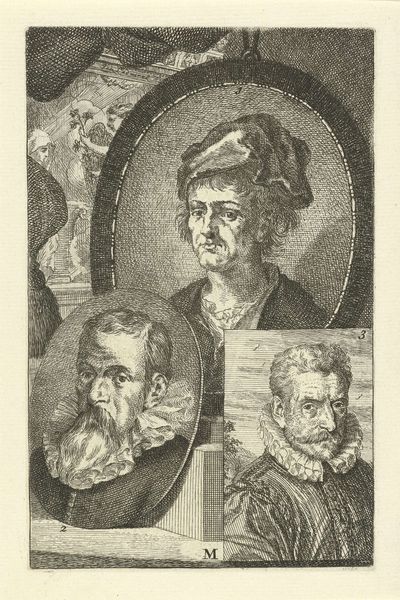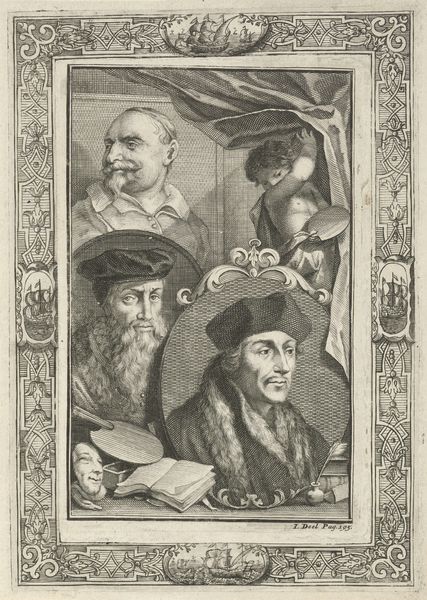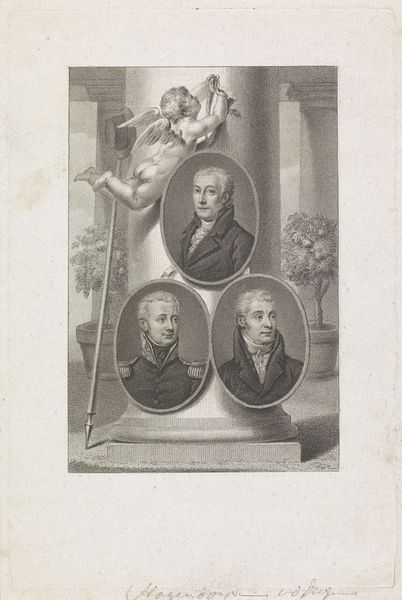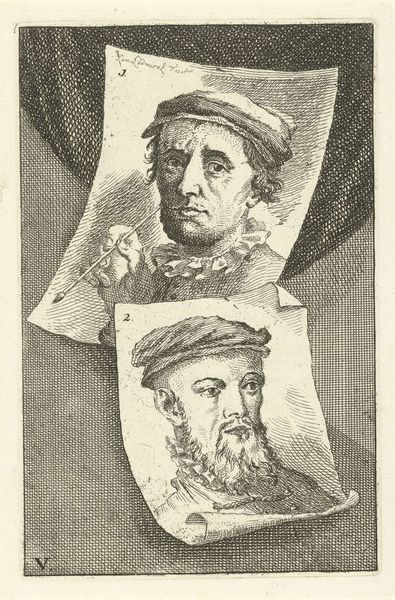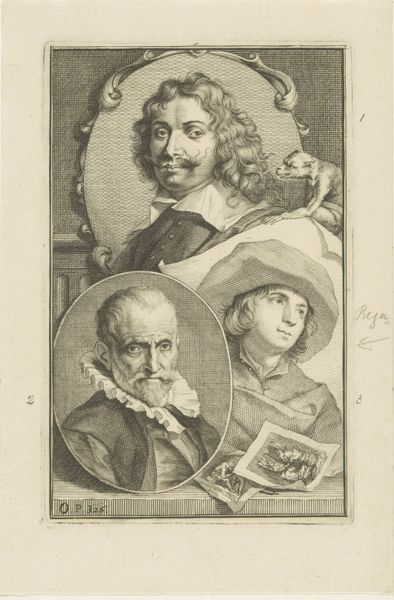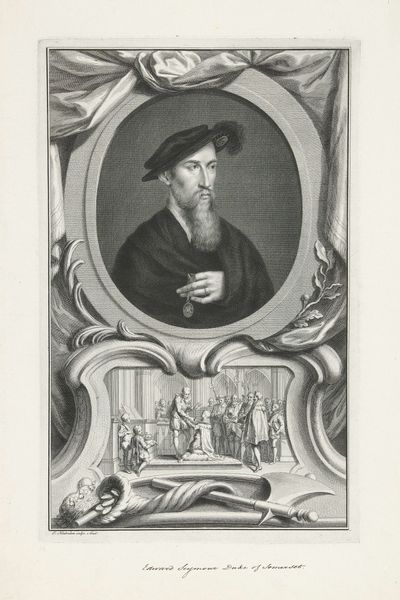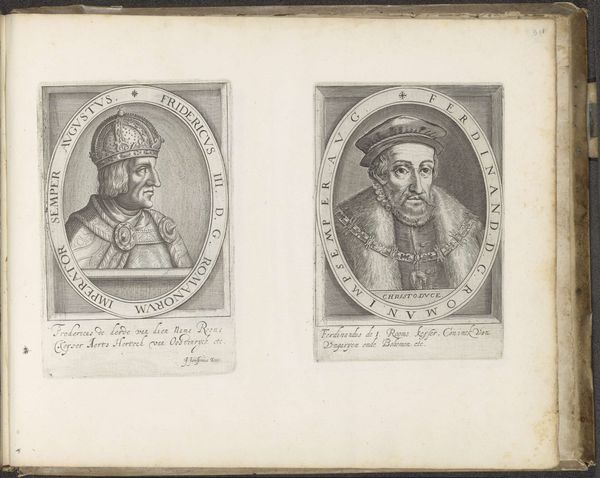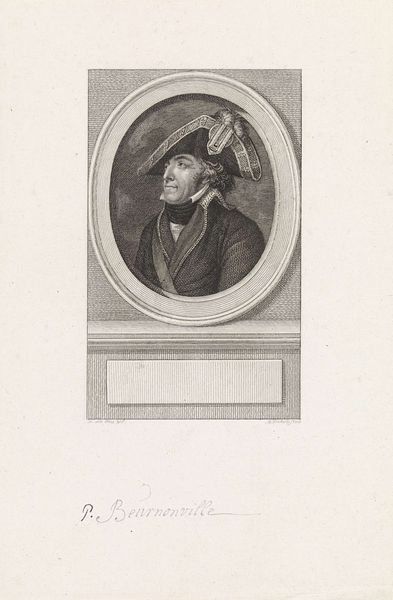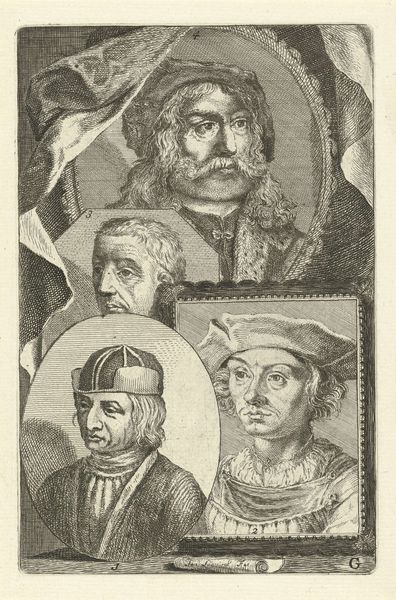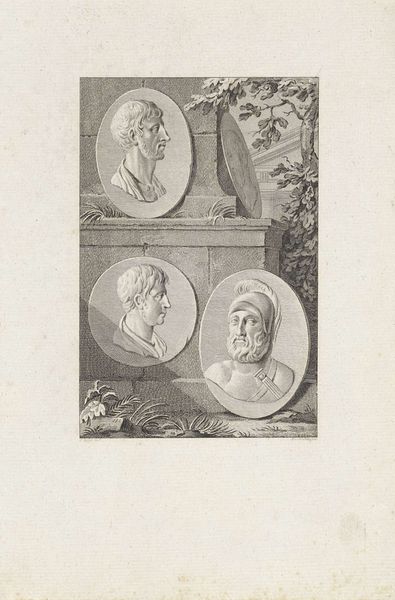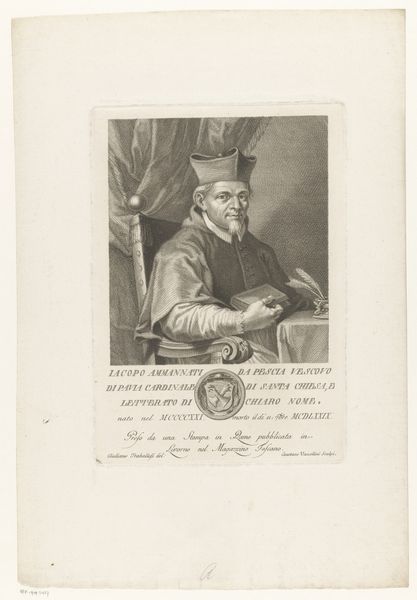
Portretten van J. Gutenberg, J. Fust, L.J. Coster, A. Manutius en J. Froben 1719
0:00
0:00
jacobhoubraken
Rijksmuseum
print, engraving
#
portrait
#
baroque
# print
#
old engraving style
#
history-painting
#
engraving
Dimensions: height 225 mm, width 165 mm
Copyright: Rijks Museum: Open Domain
Curator: Jacob Houbraken created this engraving, "Portraits of J. Gutenberg, J. Fust, L.J. Coster, A. Manutius and J. Froben," in 1719. You can currently find it here at the Rijksmuseum. Editor: It’s strikingly formal and rather stoic. The monochromatic quality gives it a very serious air. The subjects appear compartmentalized, almost clinically observed. Curator: Precisely! Houbraken has constructed a deliberate arrangement. Note how each figure is framed – circles, rectangles, and that incredible swag of fabric and sculpted cherub at the top. The overall composition is highly organized, emphasizing the grid structure so typical of baroque prints. Editor: The framing certainly directs the eye. I'm drawn to the cherub and the folds of the fabric - they lend a sense of classical inspiration, even aspiration, linking these printers to the ancient world. They also highlight the central role of history and cultural memory in our understanding of printing. Curator: Indeed. The artist meticulously uses hatching and cross-hatching, manipulating light and shadow to define the volumes. Look at how the artist has positioned the sheet of paper with lettering that creates a textural contrast against the smooth faces of the portraits and anchors the lower left. Editor: That sheet also hints at narrative, and it’s a wonderful symbolic shorthand. Printing, typography, books: it immediately establishes what connects all these solemn men. I notice the way they're all facing to the left or into the picture except for Joannes Frobenius, who alone looks out as though observing or challenging the viewer. Curator: Excellent point. That disruption in orientation generates an implied dialogue within the picture plane. The consistent rendering of light emphasizes form and underscores a unity of artistic concept that holds despite those visual differences. Editor: Ultimately, this print isn’t just a record of individuals, it’s a symbolic portrayal of progress, the intellectual labor that made printing possible, and the visual transmission of ideas through time. Curator: Agreed. What’s more, it's an exercise in controlled graphic application and intellectual interpretation. It exemplifies the technical skill of Baroque printmaking. Editor: A powerful demonstration of how technique can amplify symbolic expression.
Comments
No comments
Be the first to comment and join the conversation on the ultimate creative platform.

